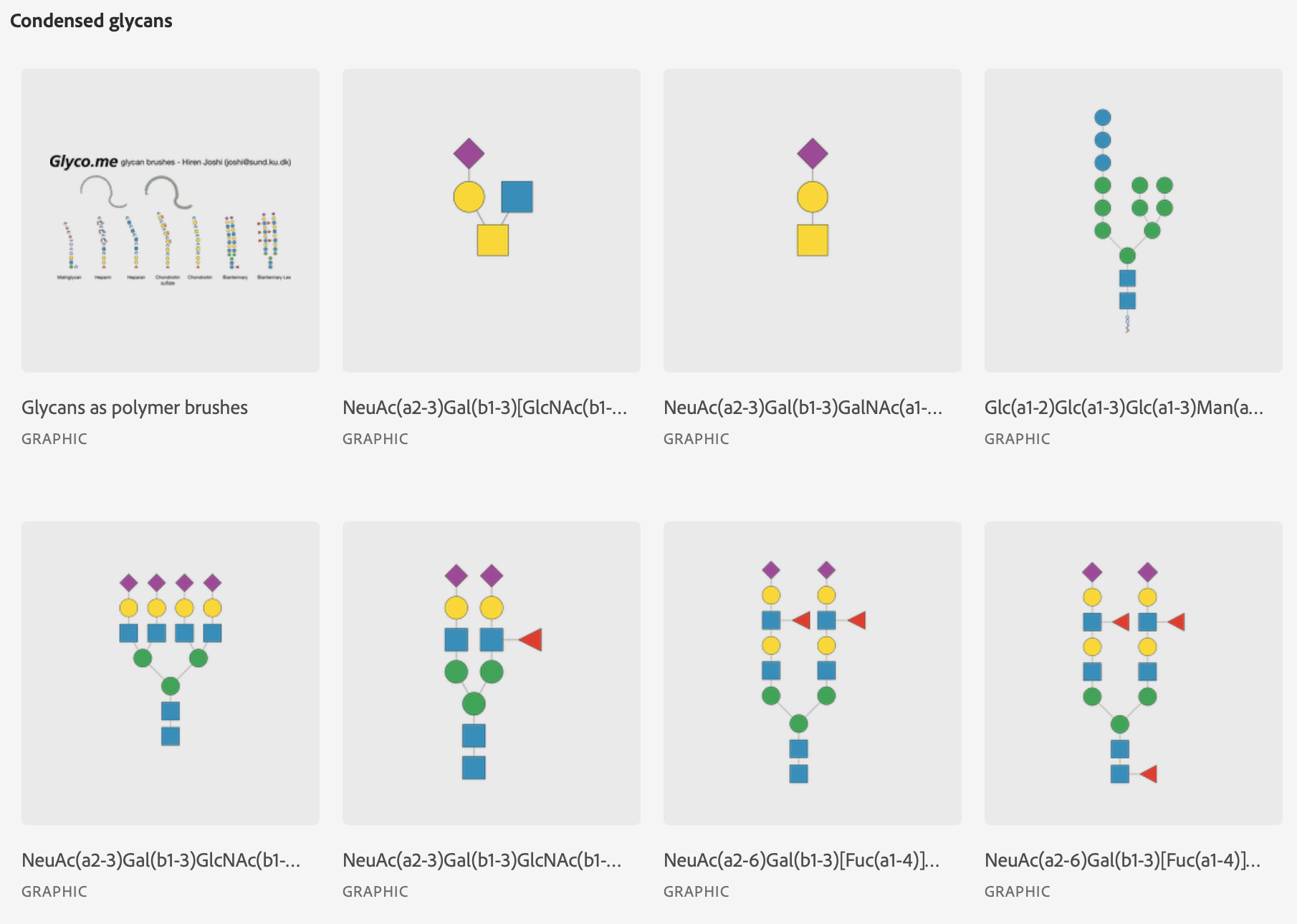Resources for in silico glycomics
Illustrator files

Screenshot showing glycan drawing resources in Illustrator
We spend a lot of time making figures for various manuscripts, and they all need different glycans on them. To save some time, we’ve made a library in Adobe Illustrator available with many common glycans already drawn, and ready to be dropped into your projects. The glycans are drawn in a condensed format, as well as using the “Oxford” style angled linkages. All the colours are following the SNFG conventions, and each monosaccharide is a symbol, so you can easily replace how the monosaccharides look if you are after customising the way that the sugars appear.
I’ve also added in some special stroke brushes that you can use to draw different glycan polymers. So far, I have included matriglycan, chondroitin/heparan and their sulfated forms, a biantennary N-glycan, as well as one with repeated Lex epitopes.
You can get access to the library here
GlycoDomainViewer Documentation
The GlycoDomainViewer brings to the community an integrative tool for glycoproteomics that enables global analysis of the interplay between protein sequences, glycosites, types of glycosylation, and local protein fold / domain and other PTM context. The GlycoDomainViewer integrates poly-Omics data sets and enables exploration and visualisation of individual glycosites on proteins from many organisms. We provide a visual representation of protein context around glycosites, automatically managing the amount of information that is drawn so that data remains comprehensible. The tool aggregates and presents data produced experimentally as well as retrieved from other databases, with a view to presenting the maximum amount of relevant protein and post-translational modification (PTM) information available to explore the possible effects of glycosylation on a protein. In order to focus upon protein context, only initiating monosaccharides are shown, with limited glycan elaboration (i.e. T structures).